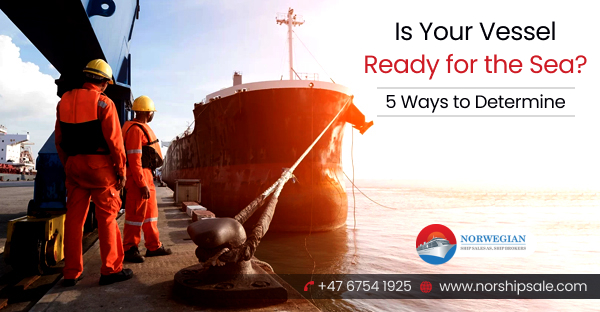The maritime industry can earn some great returns if the right investments are made. But before you start looking at options for marine vessels, you must gain knowledge on how to identify a vessel’s seakeeping ability. It is a measure of how well-prepared a marine vessel is to be taken out to the seas. In simple terms, seakeeping refers to a ship’s ability to withstand the rough conditions on the water. When you’re looking at fast ferries for sale to make a purchase, it is important to choose a vessel that scores high on its seakeeping ability.
In this blog, we look at some key qualities that can help you determine in deciding a vessel’s seaworthiness. We look at the various factors below.
Hull Size
The length of a ship or its hull size is a key factor in how smoothly a ship can withstand the waves. Whatever might be the sea condition, a ship’s length makes a huge difference in its seakeeping ability. Small ships produce large motions and curves in big waves, while large ships produce much fewer movements in the same wave conditions thanks to their larger structure and longer length. In the water, the hull is the most exposed part of your ship and hence, must be inspected thoroughly to determine the vessel’s seakeeping quality. The hull size must be chosen based on the cargo weight and vessel speed to make sure the ship is in the right motion at the ocean.
Tank Test
Tank test is a popular method chosen by many shipping companies to test the seakeeping quality of a ship. In this, a standing water ship model is used. The vessel being inspected is integrated with special features like autopilot and power steering, which allows the ship to free sail in the generated sea states. This method allows the ship inspector to obtain measurements like propeller thrust, wave elevations, torque, and accelerations. These are important seakeeping parameters that inform buyers if a ship should be purchased or not.
Metacentric Height
The metacentric height of a ship is the measurement of a vessel’s static stability on an initial basis. Typically, a higher scale of metacentric height is preferable as it implies that the ship will have better stability and not overturn easily. Thus, it is a very important factor in checking the seakeeping ability of a ship. While a small metacentric height can increase the risk of capsizing for a ship, too much height can result in seasickness for some passengers. If you’re looking at fast ferries for sale, choose a ship with an ideal level.
Numerical seakeeping
Thanks to some remarkable technological advancements made in the shipping industry, there are many companies and professional experts who can do numerical seakeeping predictions based on 3D radiation and diffraction at a forward speed. Implementing these tools allows the experts to calculate wave forces, motion response, and operations profile of a ship related to a particular sea state. Using this method allows companies to verify a ship’s seakeeping ability during its early design phase.
Conclusion
If you are thinking of investing in the maritime market, you should consult a professional shipbroker. Without any expert guidance, just looking at fast ferries for sale will not help you in finding the right kind of investment. Ship brokering companies, such as Norwegian Ship Sales, will assist you in finding the right ship suited for your needs as well as help with seakeeping inspections and maintenance and quality checks. This ensures you put your money in a vessel that is guaranteed to give good returns.


